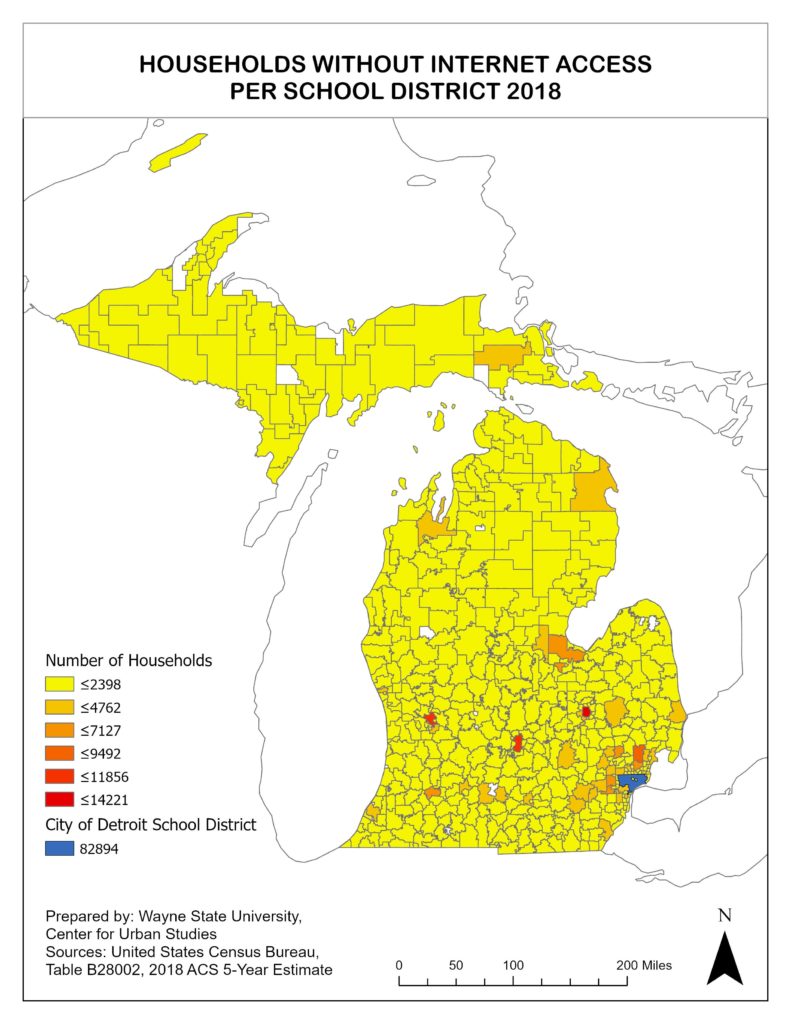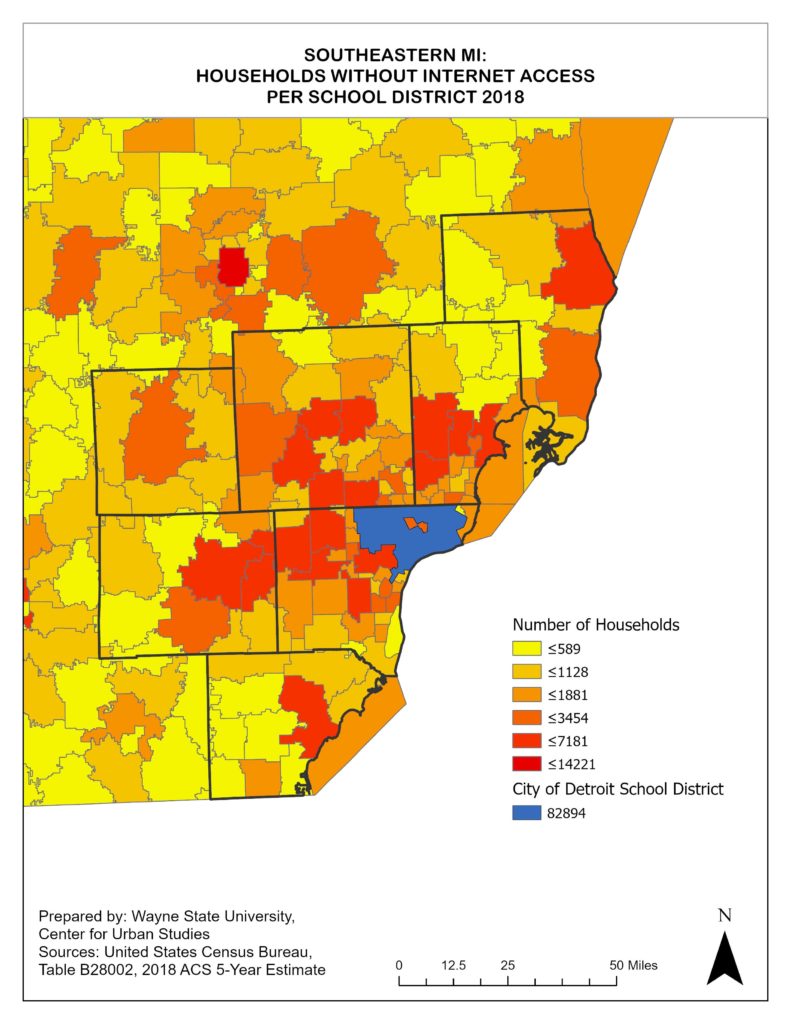Even in the age of the internet, accessibility is limited for many, including in Southeastern Michigan.
According to the Southeastern Michigan Council of Governments (SEMCOG), there are about 1.6 billion homes in the seven county region with broadband and about 250,000 without it. In other words about 87 percent of homes in the region have internet and 13 percent are without it.
Access to broadband connectivity is two-fold though.
In a small percentage of the region there is no connectivity. In Southeastern Michigan, 99 percent of homes have access to broadband and 1 percent do not; this equals to out about 1.9 homes having access to broadband and about 10,000 not having access. The first map below highlights where any kind of access to the internet lacks. Each county in the region is affected, with very small neighborhoods in even some of the most populated areas (Detroit, Canton, West Bloomfield, etc.) experiencing some dead zones. However, the more rural areas in the region (north Macomb County, western Livingston and western Washtenaw counties) and several areas throughout St. Clair and Macomb counties) have much larger areas where access to broadband does not exist. While the land area where access is lacking looks large, the population that lives in these areas must also be considered. As noted, overall, there are about 10,000 people who do not have access to the internet due to service not existing where they live.
The first chart below highlights those who are underserved by broadband, which not only includes those who do not have access to broadband at all but also those who do not have access to highspeed internet (meaning they may have access to slower internet that does not allow for extensive streaming, downloading, etc.). St. Clair County has the highest percentage of homes that are underserved at 7.1 percent, followed by Monroe County where 2.5 percent of homes are underserved. Oakland County has the lowest percentage of homes that are underserved at 0.4 percent.
***All data in this post is provided by SEMCOG***


While the existence of broadband infrastructure is a concern, so is overall access, especially for those who have limited access to the infrastructure. The chart below shows the percentage of homes that do not use the internet. Wayne County has the highest percentage of homes that do not use the internet at 19 percent and, conversely, Washtenaw County has the lowest percentage of homes that do not use the internet at 7 percent.
Factors that play into a home being able to obtain broadband include income, age and race. For example, in Wayne County, 49 percent of households with an average income of $20,000 a year or less do not have the internet. This income bracket has the highest percentage of homes without internet across the region. When examining aging groups that data shows that 33 percent of the 65-years-of-age and older population does not have the internet; this is the age bracket with the highest percentage of individuals without access. And, finally, 13 percentage of the black population in Wayne County does not use the internet. Blacks have the highest percentage of non-usage in Wayne County, and in every other county in the region.

Locally, Washtenaw County has committed more than $13 million in American Rescue Act Funding to expand affordable and equitable high-speed broadband infrastructure to unserved and underserved communities. This is part of a larger investment by Washtenaw County which is focused on connecting every to high-speed broadband infrastructure.
Additionally, the City of Detroit is creating a test fiber-to-the-home connectivity project in Hope Village. This project will connect about 2,000 homes to affordable service. This project is also being funded by the American Rescue Act.
With millions of dollars dispersed to every county in American Rescue Act Funding, this should certainly become a priority for more places than just Washtenaw County.

